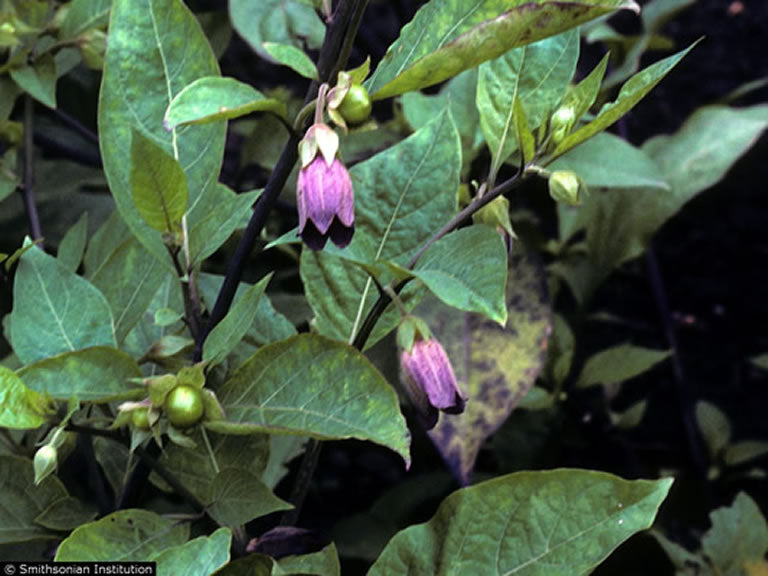Belladonna or Deadly Nightshade, scientifically known as Atropa belladonna, is a plant with a fascinating history deeply rooted in spiritual, traditional, and religious practices. Here's an overview of its diverse uses across different aspects of human culture:
Belladonna has a long and storied history dating back to ancient times. It was known to the ancient Greeks and Romans, who recognized its toxic properties. In medieval Europe, it gained notoriety as an ingredient in witches' brews, contributing to its association with magic and the supernatural.
It is thought that Belladonna was an ingredient used to create an ointment that would be applied to the skin that would cause the person to feel as if they were flying.
It was said that the spirits that reside with the plant would come out as witches prepared their covens in the night.
Despite its toxicity, Belladonna has a history of medicinal use. It contains alkaloids with potential therapeutic effects, and in the past, it was used for various ailments. However, its use has significantly diminished due to the high risk of poisoning.
The name "belladonna" means "beautiful lady" in Italian, reflecting its historical use by women to dilate their pupils, which was considered attractive during certain periods. However, this practice was dangerous and fell out of favor.
Belladonna has been employed in certain spiritual and shamanic practices for inducing altered states of consciousness. Some believe it can open a gateway to other realms or facilitate visions. However, such uses come with significant risks and should be approached with caution.
Belladonna has been associated with certain pagan and Wiccan traditions, often used in rituals and ceremonies. It might be regarded as a plant with both protective and transformative qualities, symbolizing the cycles of life and death.
* Transformation and Shadow Work: Belladonna is sometimes considered a plant associated with transformation and shadow work in witchcraft. It might be used in rituals aimed at delving into the subconscious, confronting inner fears, and undergoing personal metamorphosis.
* Protection and Banishing: Despite its potentially dangerous nature, some practitioners believe that Belladonna can be used for protective purposes or banishing negative energies. It is thought to have the power to ward off harmful influences when used with intention and respect.
* Connection to Moon Magic: In certain lunar traditions within witchcraft, Belladonna is linked to the energy of the moon. It might be incorporated into rituals or spells during specific lunar phases to amplify the potency of magical workings.
Belladonna is associated with the goddess Hekate. It can be used during rituals and spells to communicate with spirits and ancestors, heighten psychic abilities, intuition and increase power and efficacy in spells.
Due to it’s toxic nature, Belladonna makes an excellent addition to complex curses and hexes.
**Cautionary Note:**
Due to its extreme toxicity, it's crucial to emphasize the dangers associated with Belladonna. Ingesting any part of the plant can be lethal, and its spiritual or traditional uses should be approached with utmost care and respect for safety.
In exploring the multifaceted history of Belladonna, it becomes evident that this plant has played a significant role in shaping cultural narratives surrounding beauty, danger, and the mystical throughout the ages.
You can find Belladonna Leaves & Root and other rare traditional herbs at TouchOfMagickShop.com ! 🌿

